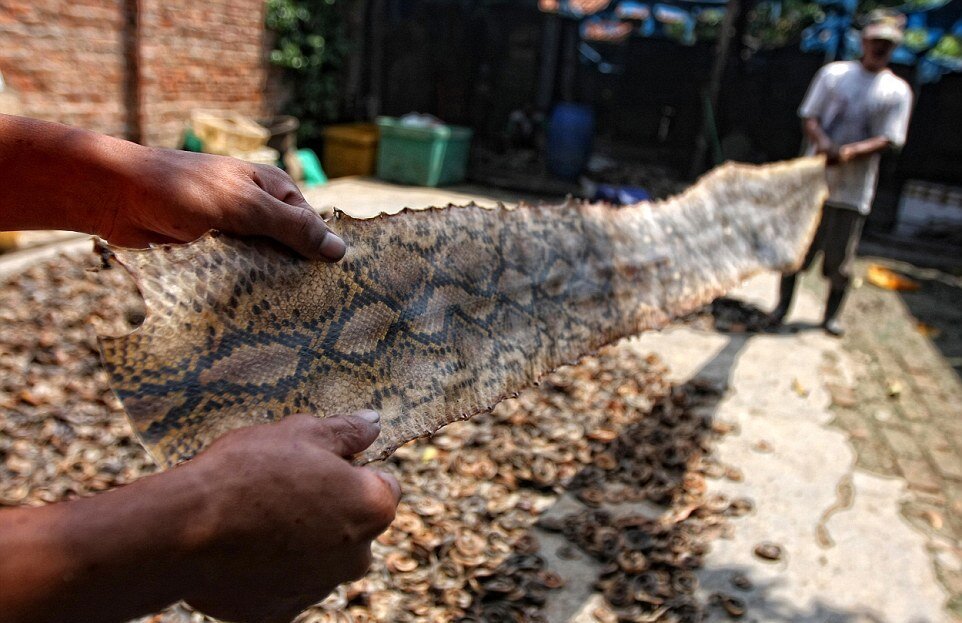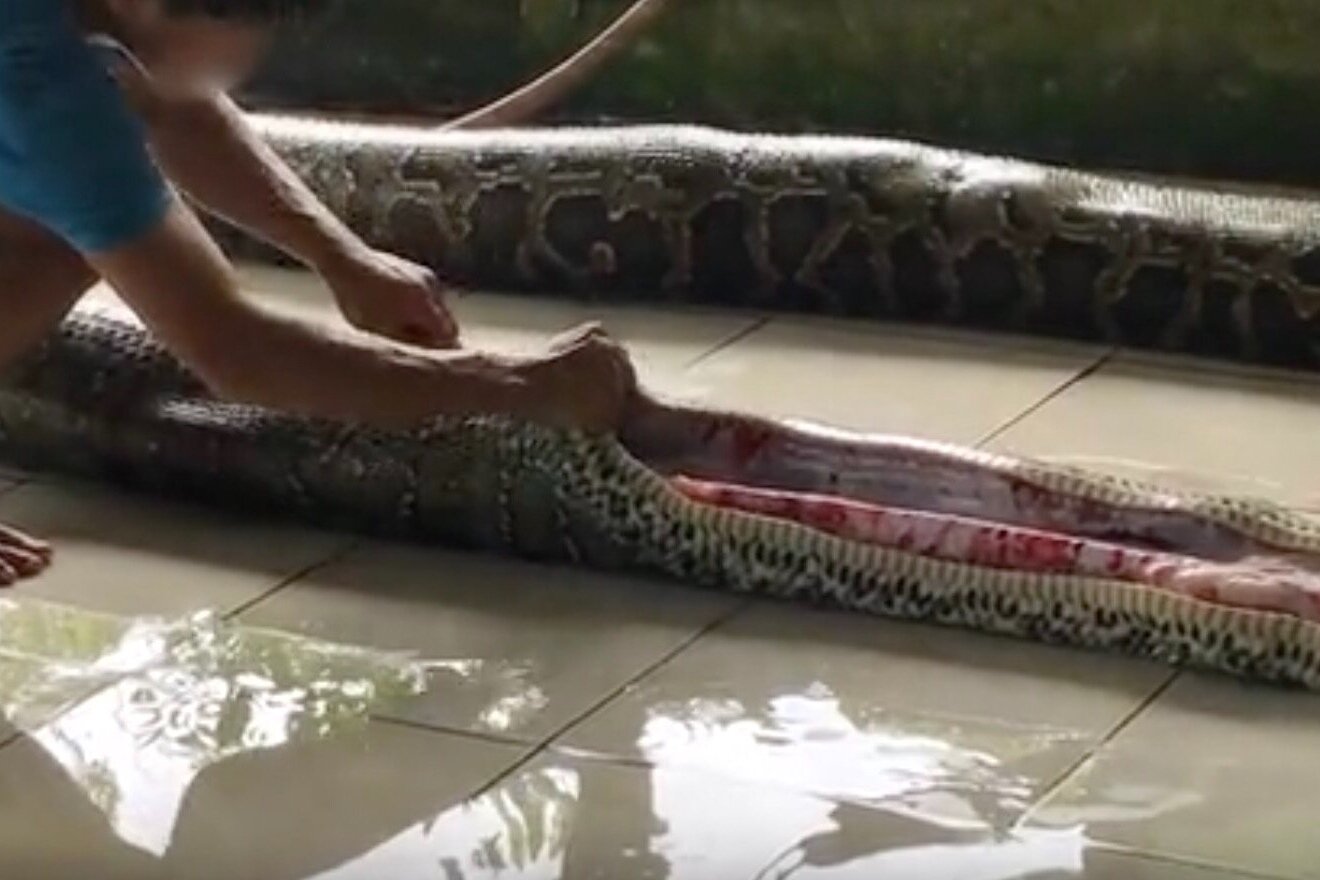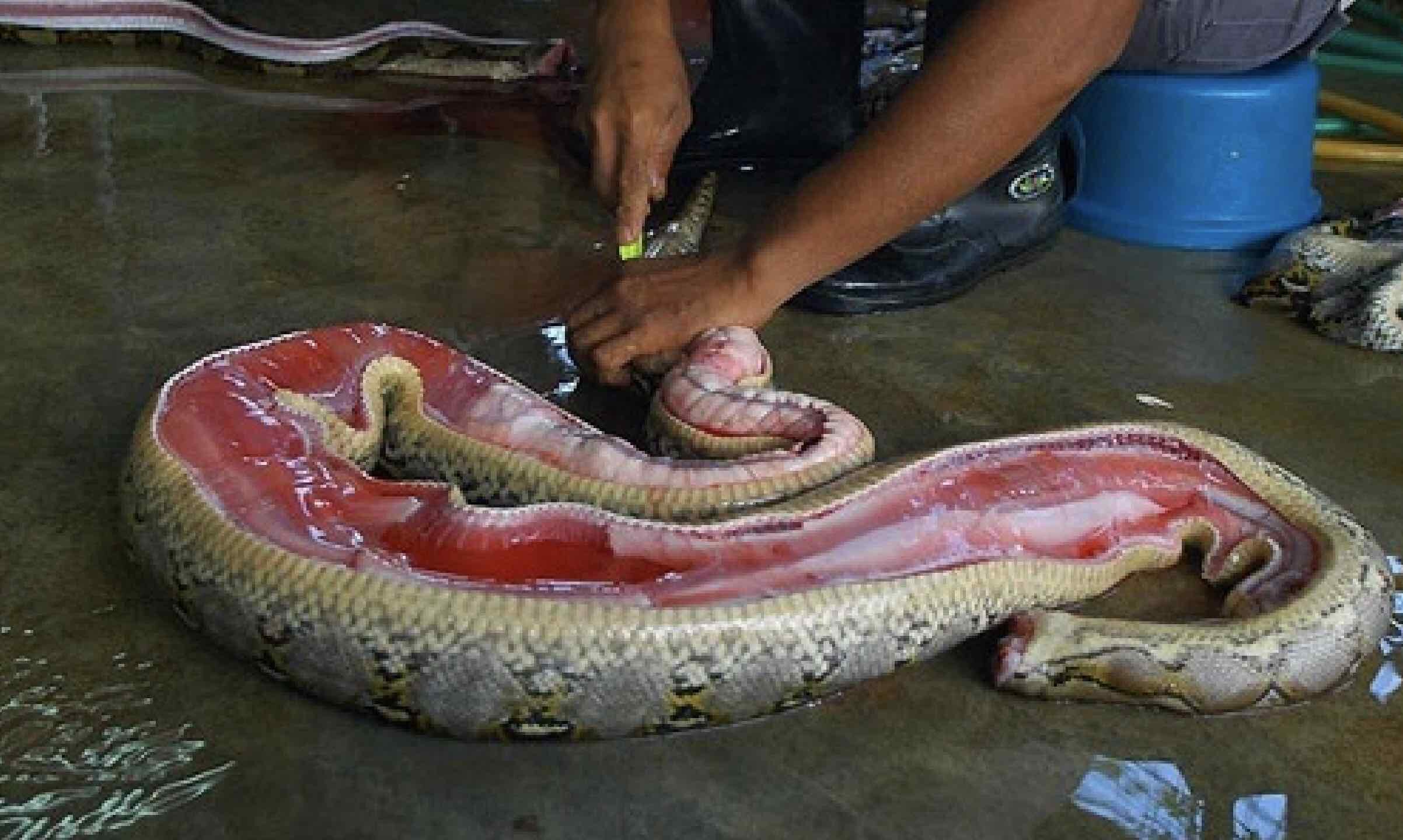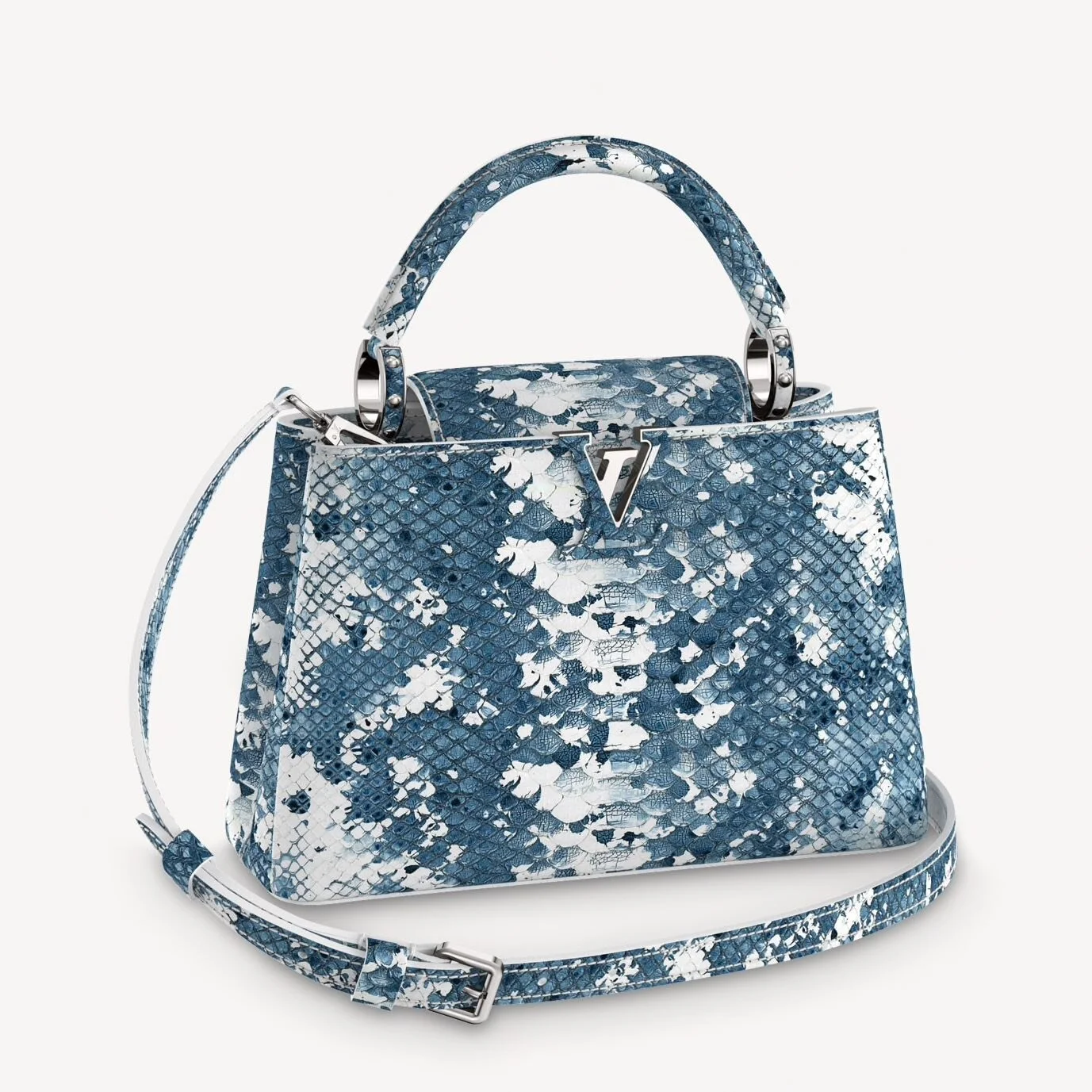Issues in the snake and ‘exotic’ skin supply chain
Needlessly slaughtered reptiles are farmed and ripped from their natural habitat; both cruel and a great risk for zoonotic disease outbreak.
Snakes and lizards, like all the animals who are slaughtered in the name of ‘exotic skins’ - stingrays, crocodile and alligators among them - are sentient. It is critical that we do not forget this, simply because these species look different to us. They feel pain as much as they feel contentedness.
Yet, these individuals are treated like inanimate objects.

How do the skins of reptiles become materials?
Snakes and lizards are sometimes farmed, but most often captured from their natural habitats in the wild.
The industry calls this a ‘harvest’.
These animals are kept in cages or in rooms piled on top of each other, until they are killed.
Image: Yudhi Sukma Wijaya / Barcroft Media
Reptiles who are stolen from their natural environment are killed in horrific ways.
Blown up like balloons
Pythons have their mouths and anuses constricted with tight bands before a hole is cut into their head or tail. Then, a hose is inserted into the hole inside them that pumps compressed air inside of their bodies, blowing them up to kill them. Some are stunned with electricity - like from a car battery - before hand. Animal welfare scientists recognise this to be an extremely painful process.
Image: Skin being pulled from a snake’s body / PETA Investigation
Blunt force and spikes
Snakes are hit with a heavy blow to the head with the back of a machete, or large hammer-like tools. After, their heads are pierced with spikes that hang them high from the ground, so that their skin can be peeled off their bodies as though they were fruit.
Image: Dead snakes being hosed down of blood / Yudhi Sukma Wijaya / Barcroft Media
This is the fate of about 300,000 reticulated pythons who are born into the natural landscapes of Indonesia and Malaysia each year.
A lot of mainstream reporting claims that these methods are ‘humane’, however investigative footage can allow us to decide what we think about that, for ourselves.
To be ‘humane’ is to be ‘compassionate and benevolent’.
Sold skins ripped from snakes are then tanned with largely the same carcinogenic chemicals used in the leather industry. These chemicals harm workers and communities surrounding tanneries, as well as the environment.
Often, as with the bag above, these tanned skins are also bleached and dyed with chemicals. Sometimes, they are coated with a thin layer of plastic for additional shine and wear resistance.
Image: Snake skin before tanning and processing /
People for the Ethical Treatment of Animals
It’s argued that indigenous communities benefit from the luxury, exotic skin trade. But is this accurate?
In an article for Business of Fashion, CFJ board member Joshua Katcher wrote:
“The marginalised and indigenous communities who often supply reptile skins can often be harmed by dependency upon the whims of fickle fashion industry trends, but they’re also invoked to justify practices unrelated to them”, for example, the cruel treatment of snakes killed for a Western desire.
“It’s telling to see that 96 percent of the value of exotic skins is captured by the European fashion industry, with hunters and local communities sometimes making just 0.5 percent of the final value of a high-end handbag.’’
Image: A small Louis Vuitton bag valued at over $11,000 USD, made of python skin. Pythons can be sold to slaughterhouses from local capturers for a mean price of $3.5USD/kg, and sold onto international brands for about $30USD.
“The fact that exotic skins are again being feted as the epitome of high fashion at a time of rapid species decline and changing ecologies is fairly perverse.”
Lucy Siegle, renowned fashion sustainability and ethics reporter.
While it is claimed, even by the IUCN, that the capturing of snakes and lizards from the wild is sustainable, is any killing of free-living animals really sustainable in the sixth mass extinction this planet has faced?
In 2022, a peer-reviewed study from Indonesia showed that there is no evidence the fashion-driven trade of blood pythons and their skins is sustainable, with regulation and a shift beyond skin use required to protect wildlife.
The fashion industry is the largest importer of ‘illegal wildlife’ into the US, potentially impacting wild populations. Sometimes, these illegally obtained skins are laundered through faux farms.
It is no time to be taking from nature and killing, it is a time to give back, and restore. We need compassionate conservation.
This cruelty impacts us, too.
Zoonotic diseases like COVID-19, which have claimed so many human lives, infect us through other, non-human animal species.
Conservation experts have given warning that the global trade of exotic animals skins - like those from lizards, snakes, stingrays, crocodiles, alligators and other animals - can contribute to the spread of zoonotic diseases that infect humans.
The bloody treatment of wild animals like snakes can increase the risk of infections in humans, with diseases we may otherwise not be in contact with. If these diseases are then able to be transmitted between humans, surrounding communities come into risk.

There are more totally just materials that don’t require the slaughter of free-living animals. It’s time to leave ‘exotic skins’ behind.
Want to keep learning?
-

Zoonotic disease risk in fashion
What responsibility does the fashion industry have to help prevent zoonotic disease spread?
-

Fashion industry tied to significant wildlife slaughter in new analysis
Faunalytics have released analysis of 15 years worth of legal wildlife import data.
-

Crocodile skin industry
Many reptilian animals spend their entire lives confined for a cruel industry harming the planet.








